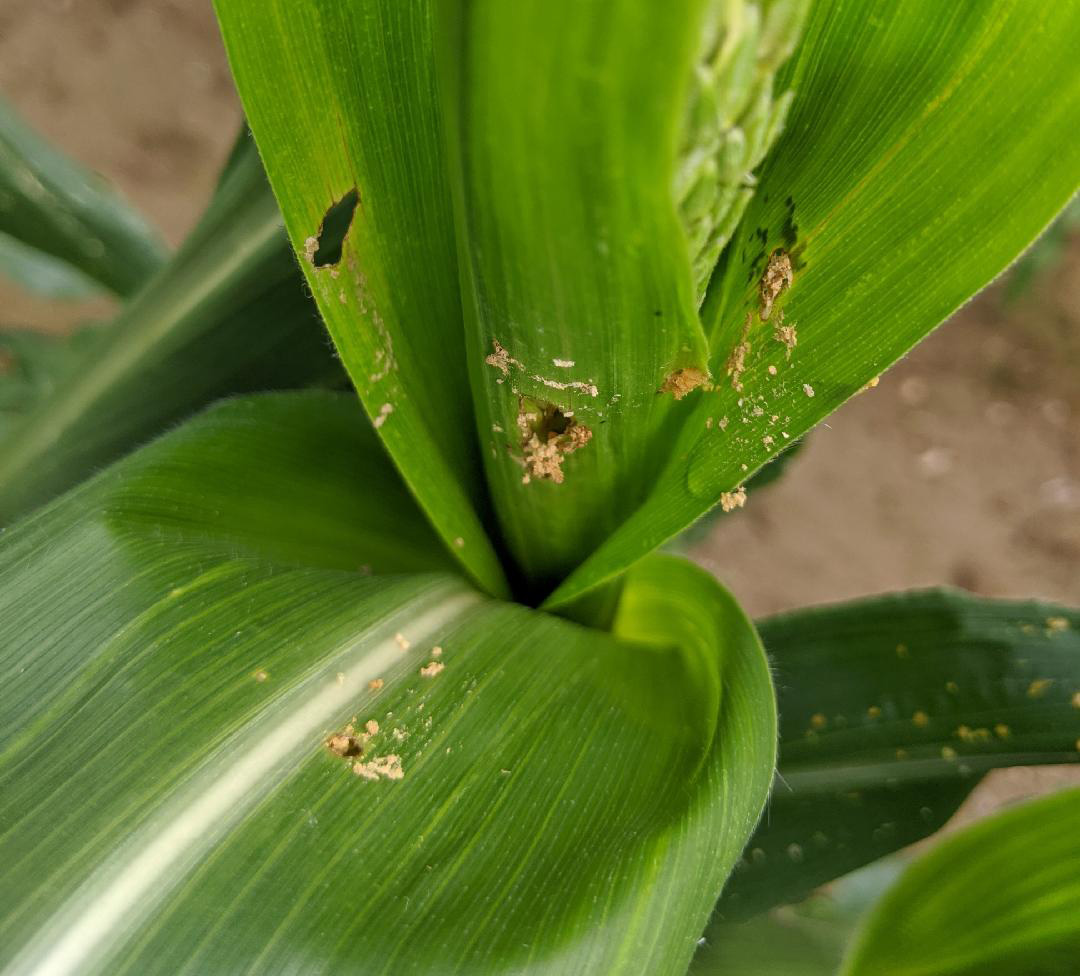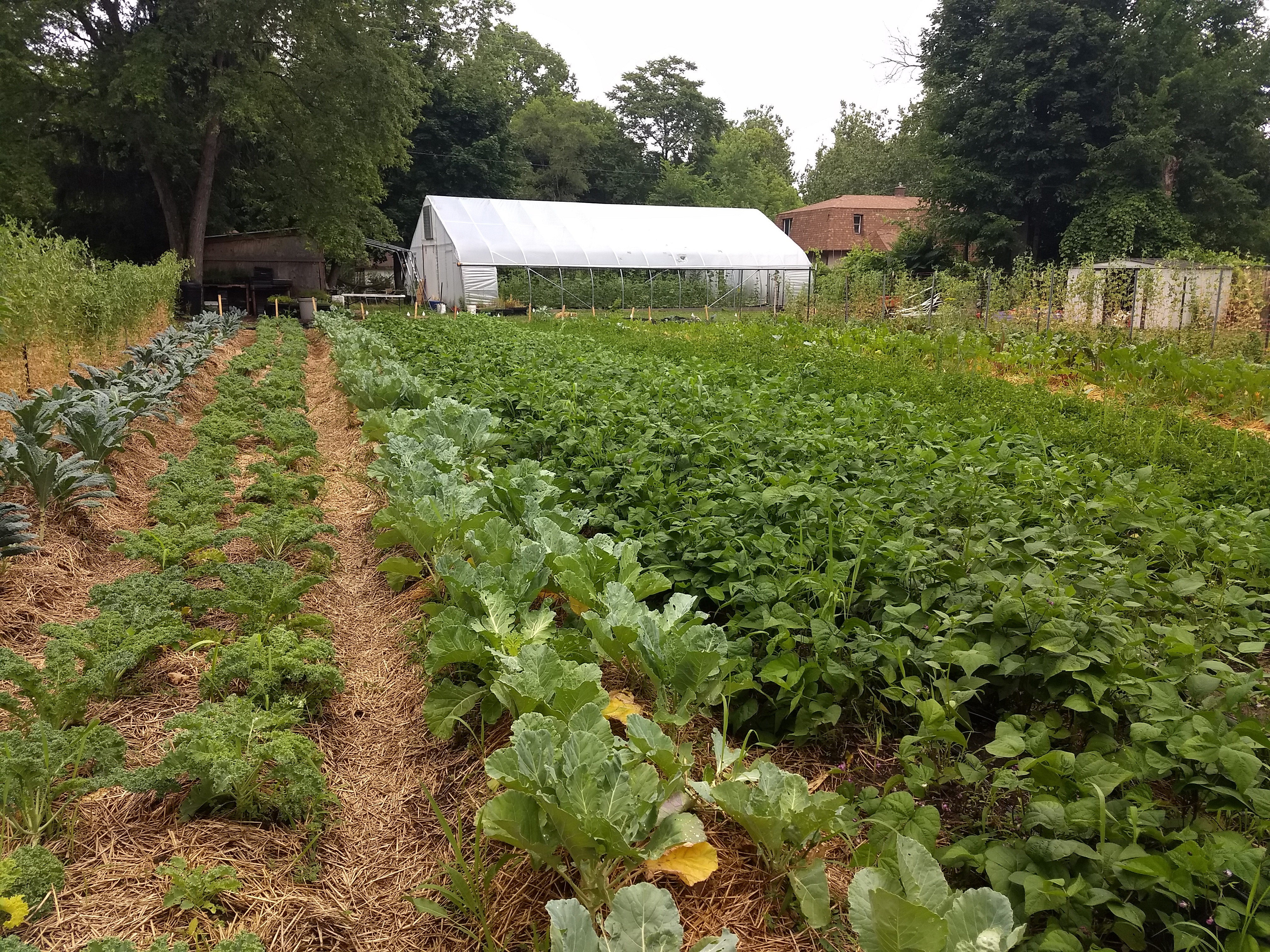East Michigan vegetable update – July 22, 2020
Harvest of warm-season crops is picking up. High dew points are increasing disease threat.

Weather
Our region received between 0.65 and 1.5 inches of rain over the last week, and most would agree it was a good thing. It seemed like plants grew overnight.
You can find more detailed weather information for your area by visiting the Michigan State University Enviroweather station closest to you:
Here is a table that summarizes European corn borer activity, based on growing degree day (GDD) models. I used Lapeer as an example. I removed the seed and root maggot data because those pests are not much of a threat going forward.
|
| |
|---|---|
|
Current degree days (Lapeer) |
1,393 |
|
Overwintering generation start to emerge and lay eggs |
450 (occurred June 11) |
|
Peak flight and egglaying of overwintering generation |
700 (occurred June 28) |
|
Peak flight and egglaying of first generation |
1,700 |
|
Peak flight and egglaying of second generation |
2,450 |
Weeds
Though our crops got a nice boost over the weekend, so did weeds. Now is a pretty good time to find escape weeds from preemergent herbicide applications and perhaps some post-emergent applications. If you think the herbicides you have been using are not working on the same weeds anymore, let me know. Our new weed specialist, Sushila Chaudhari, is screening vegetable field weeds from across the state for resistance to herbicides.
Alternaria, the bandwagon pathogen
This time of year, and going forward, it is common to see diseases in vegetables on the foliage and fruits. Some of these plants will be sent to the MSU Plant & Pest Diagnostics lab on campus. Overwhelmingly, what they find is Alternaria. Why? Because it is a “bandwagon” disease that hops on to basically any other plant problem, from hail to insect feeding to bruising,to nutrient deficiencies/toxicities. However, sometimes it is the main problem. Basically every crop has its very own Alternaria, though you may know it by a different name:
- Vine crops – leaf blight, Alternaria cucumerina
- Tomatoes/potatoes - early blight – Alternaria solani
- Potatoes – brown spot, Alternaria alternata
- Peppers – fruit spot, Alternaria tenuis and Alternaria alternata
- Asparagus – leaf spot, Alternaria alternata
- Brassicas – leaf spot/head rot, Alternaria brassica and Alternaria brassicola
- Carrots – black rot/leaf blight, Alternaria radicina and Alternaria dauci
- Beets – leaf spot, Alternaria tenuissina
- Onions – purple spot, Alternaria porri
Crop progress and pests
In cole crops, harvest and planting are both happening. Every common caterpillar is present. The gray cabbage aphids can be found on some farms. They tend to prefer and first get started on Brussels sprouts but will happily colonize the other brassicas as well. Flea beetle pressure has remained high this season, especially on the brassica greens, such as mizuna, arugula, etc.
In root crops, harvest and planting are both happening. The second generation of cabbage maggot could be found tunneling in turnips and radishes. Red beet foliage was looking pretty ratty on some farms, with a combination of leafminer, Cercospora leaf spot and Alternaria leaf spot. This is OK if you plan to chop tops and only sell the root. Carrots are starting to gain size and sweetness and are under heavy deer pressure. For what it’s worth, one grower said a block permit was easier to get this year due to the COVID-19 pandemic. The officer did not have scheduled time to come out.
Potatoes are being harvested. Leafhopper damage and early blight can be found now.
Sweet onion harvests have begun. Some bulbs are on the small side this year. On both sweet and storage onions, foliar symptoms from Stemphylium and Pseudomonas are prevalent on many fields. Thrips were washed out from the weekend rain.
Sweet corn is being picked on a few farms now, with several more locked and loaded. Corn smut is showing up on tassels on some farms. Tar spot has been found in field corn in Gratiot, Saginaw and Shiawassee counties. Tar spot is a new disease of field corn, and can find itself on sweet corn as well. On field corn, yield is lost when plants are defoliated by the disease. This results in poor kernel fill (reduced ear weight), early germination of kernels on the cob before harvest and increased lodging from stalk rot. For Midwestern sweet corn growers, these things could be a problem under very high disease pressure, though I do not think Michigan growers have spoken up about seeing this as a real issue. The spots can show up on husk leaves around ears, which may turn off customers though the ear inside may be fine. This may be how it manifests as a problem.
We have about four corn earworm traps around the state right now, and most of them are catching one to two moths per night. A few grower traps in Imlay City, Michigan, and the trap I set up in Linden, Michigan, two weeks ago have not caught any moths at all. So, actual pressure is still low. You may still find a wormy ear here and there, but probably not enough to warrant the cost of a spray. Also, field corn is in various stages of silking right now, and will soak up an appreciable amount of these moths. Let’s not forget last year, when tens of thousands of acres of field corn were not planted and all the corn earworm moths came to sweet corn patches.
European corn borer and western bean cutworm eggs and caterpillars can be found in whorls, and some boring damage into the tassel was found in Genesee County.

Right now, birds are probably the main sweet corn pest I’m hearing about. When and if possible, removing tassels from corn after silks start browning is a good way to reduce their perching and feeding in the crop. I am told that short, early corn for mechanical harvest is not possible because the machines need all the height they can get for pulling stalks through. In these cases, an assortment of harassment techniques will need to be employed.
Peas are dying down, and replanting has begun for fall harvests.
Beans are being picked. At least two farms I visited last week were getting their shaker tables and bean lines set up.
Pickling cucumber machine harvest has begun. Downy mildew was found in Gratiot and Saginaw counties on Monday, July 20. This, with Sanilac County from a few weeks ago, has pretty well established it as taking hold here. With high dew points this week, I think we could see a lot more. Young plantings will need protection. Banding may be the best bet.
Melons harvest is just beginning with watermelons not far off.
Pumpkins and most winter squashes are starting to vine and flower. Some early acorn squashes have fruit nearing harvest already. Summer squash picking has been strong. Squash bug eggs and young squash bugs can be found on many farms.
Hoop house tomatoes are still being harvested, and field tomatoes, peppers and eggplants are just picking up. Some field tomatoes at the bottom of the plant can rot from poor airflow this time of year. Staking helps, but it’s too late to start that now. Blossom end rot is showing up some crops. Flea beetle pressure has remained high on eggplants.

Virtual Field Day
I am making a 30-minute video overviewing the vegetable trials happening on the east side this summer. If you want to watch it, it will be available after July 29. See "MSU holding virtual vegetable trial reviews for Saginaw Bay area" for more information.
Great Lakes Vegetable Producer’s Network
MSU Extension is participating in a live, weekly roundtable discussion during the growing season for commercial vegetable producers in the Great Lakes and Midwest region. Join us! We broadcast live via Zoom at 12:30 p.m. ET/11:30 a.m. CT every Wednesday from the first week of May to the first week of September. Listen live or later. If you have a pressing vegetable production issue that you would like discussed, simply email it, along with your phone number, to greatlakesvegwg@gmail.com.
Next week, July 29: Managing Sweet Corn Caterpillars
Please contact me at phill406@msu.edu or 616-901-7513 with questions, concerns, or to schedule a farm visit. You can also send plant materials to MSU Plant & Pest Diagnostics.



 Print
Print Email
Email

